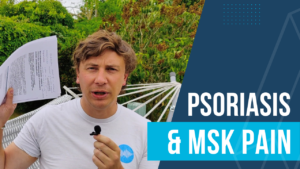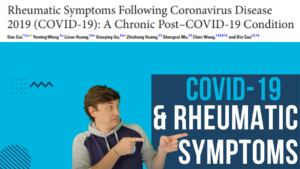Intro
Hypermobility is common in Physio clinics the world over, over a series of blogs I hope to convey my current understanding of the factors at play with regards to diagnosis and management of these individuals. I would like to take this opportunity to say this is MY synthesis of available evidence and experience of working with these individuals. I am perfectly happy to be challenged and corrected as I feel I have a lot to learn about this highly complex group!
This blog will outline some of the different types of hypermobility syndromes, I hope this helps you in your clinical reasoning process when faced with this client group. If you didn’t read part 1 or part 2 yet, please give them a look over first.
PLEASE REMEMBER – THIS BLOG IS NOT A REPLACEMENT FOR CLINICAL REASONING, IF YOU ARE UNSURE GET ADVICE
As outlined in part 1, joint hypermobility is not always part of a clinical disorder and it is important that this distinction is made to avoid over medicalising those who do not fulfil this criteria. According to Castori et al the word syndrome in combination with Hypermobility should be reserved for “Joint Hypermobility together with the primary involvement of at least a second tissue/structure (e.g. skin involvement in hypermobile EDS)”. This essentially means try not to label those without extra-articular features with a “syndrome”.
Below I have elaborated on some of the syndromes associated with hypermobility, the list is by no means exhaustive in both the possible conditions mentioned and their possible associated symptoms/manifestations.
Hypermobility Spectrum Disorder (HSD)
In theory the simplest of the syndromes, this covers the patients WITHOUT extra-articular symptoms (skin, autonomic dysfunction, bowel dysmotility). To satisfy the criteria for this syndrome we are looking at multi joint hypermobility with a history of dislocation (multi joint or same joint multiple times) and/or persistent multi joint pain.
I suppose technically Ehlers Danlos Syndrome would be a HSD with extra-articular manifestations, welcome to the world of grey and overlapping diagnostic boxes. I suspect these will still get mixed up from time to time mostly due to the absolute mess that was the laundry list of previous diagnoses put upon these patients historically. At least this on the face of it is much simpler.
****Please see end of blog****
Ehlers Danlos Syndrome
Aka EDS, EDS type 3, hypermobile EDS, benign hypermobility syndrome… (probably some others I can’t remember)
Ehlers Danlos Syndrome is the archetypal Hypermobility Syndrome that contains non-musculoskeletal symptoms. Fortunately in recent history efforts have been made to simplify the diagnostic nomenclature of this condition. For our purposes we are now encouraged to use the term “Hypermobile EDS”. There are other types of EDS but in all honesty as long as Physio’s refer appropriately on recognition it is not particularly relevant in this context. Be aware there are potentially life limiting complications of some of the more serious forms of EDS but these are fortunately rare and SHOULD be being looked after in specialist MDT centres.
The majority of Hypermobility Syndrome diagnoses will fall into the category of the newly termed (and hopefully simplified) Hypermobile EDS. As mentioned in Part 2 of this series, we were previously reliant on the Brighton Criteria to help recognise associated extra-articular manifestations. This has now been superseded by the RCGP EDS toolkit which is definitely useful when suspicious. Importantly this now includes POTS (Postural Orthostatic Hypertension) which is worth its own line of questioning outside the scope of this particular blog.
Things to remember regarding people with Hypermobile EDS is they are prone to hyperalgesia and persistent pain at a higher rate than the average population. A combination of multiple injuries, lack of confidence in their joints and differences in the neural periphery are probably significant contributing factors. There is also a high likelihood of disturbed proprioception. Adding these factors together alone can give some idea of why these individuals have functional difficulties even before you start to map on autonomic dysfunctions.
Marfan Syndrome
A usually inherited condition which is recognised by physical characteristics, these include being very tall with long limbs, pes planus and crowded teeth (there is more info here). There is also a significant relationship with Hypermobility of the joints.
They are an important group to be aware of because they often have heart problems commonly to do with the Aorta and this can be significantly life limiting. All Marfan Syndrome patients should have been screened by Cardiology but hopefully this will have already occurred by adulthood as the signs tend to present during the teenage growth years or earlier so unless you are in a paediatric environment you shouldn’t be the one noticing it!
Please do visit the links in this blog for further information, the nomenclature should be much simpler to grapple with these days rather than the minefield of diagnoses previously concocted even though there does remain overlap.
The final blog in this series will look Physiotherapy management. Please feel free to ask questions or point me in the direction of further information!
As usual thanks for reading and I hope that you find this useful.
Great resources are the following paper and the https://hypermobility.org website.
Castori, M., Tinkle, B., Levy, H., Grahame, R., Malfait, F. and Hakim, A., 2017, March. A framework for the classification of joint hypermobility and related conditions. In American Journal of Medical Genetics Part C: Seminars in Medical Genetics(Vol. 175, No. 1, pp. 148-157).
***Please note, since writing this blog I have received information in conflict to this definition. Below you will see an image lifted from the paper on which these definitions were extracted and you will see where my line of reasoning arises. While I am aware I have simplified things for the sake of keeping the blog of readable length I know feel I need to clarify some points.
HSD (Hypermobility Spectrum Disorder) CAN be associated with extra-articular features such as POTS, bowel dismotility etc. As previously pointed out, if your patient has extra-articular symptoms they should be referred for review by an appropriate medical colleague.
This essentially leaves us in the same place as before and my advice would be to assess the same as any other condition. Assess the whole person, be vigilant and listen to the patients story.
I promise I will return to Hypermobility Syndromes when more literature is released to clear this up, although I am extremely tempted not to****



